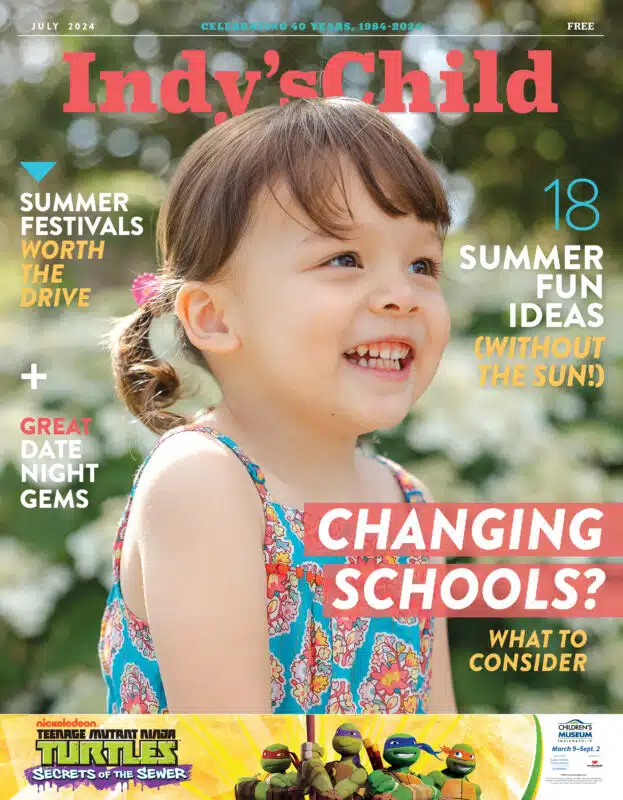As parents, we have the opportunity to engage our children in their many curiosities. While there’s no doubt some of our kids’ questions will surprise us, others we can be prepared for. We can expect that, at some point, our children will notice people with disabilities and, naturally, have questions. Here are some tips for getting ahead of the conversation and having meaningful discussion about disabilities.
Accept Your Discomfort
If you’ve felt that tingle of discomfort when your child has had a question about a person who is different from them, you’re not alone. Oftentimes, this anxiety can be rooted in not wanting to make others feel badly, but by censoring yourself or shaming your child for asking a question, you can inadvertently send the message that talking about disabilities is taboo, or even worse, that disabilities are bad.
The important thing to remember is that questions about disabilities are normal because young children are naturally curious, says Sally Reed Crawford, M.A., research associate with the Early Childhood Center at the Indiana Institute on Disability and Community, who has worked in the disability field for 40 years. By accepting your discomfort and proceeding with a direct and respectful conversation, you can help normalize disabilities, promote an inclusive mindset, and set a tone of empathy and respect.
Talk Directly
Use clear, matter-of-fact language to talk about disabilities, Crawford says. This is not only respectful to the disabled community, it simply makes more sense to children. Practice direct conversation by:
Avoiding Euphemisms
Use the word disability instead of words like “handi-capable” or “special needs.” Euphemisms further stigma about disability and are not preferred by many in the disabled community.
Speaking in a Neutral Tone
Answer your child’s questions with neutral, fact-based responses, taking care not to invoke a sense of pity or sadness. For example, you could say, “Yes, that woman is walking with a guide dog. Guide dogs are trained to help people move around if they cannot see.”
Using Positive Language
Avoid language that implies that something is wrong with a disabled person. For example, instead of saying, “She uses a wheelchair because she can’t walk,” Crawford recommends saying, “Some people’s muscles work differently and a wheelchair helps them be able to move.”
Admitting What You Don’t Know
If you don’t have an immediate answer to your child’s question, responding with “I don’t know, but it’s something we can learn more about” is completely valid — just make sure to follow up.
Emphasize Similarities
Emphasizing similarities between people with and without disabilities helps develop empathy in your child. Make this personal by pointing out similarities your child has with a disabled person they know, such as they both like to draw or both like pizza. “Expand by asking [your] child what they are good at and what they need help doing, emphasizing we all have things we can do and we all need help in other ways,” Crawford suggests.
Discuss Unseen Disabilities
“It is important to bring up how disabilities are sometimes visible — we can see them — and that sometimes disabilities are not able to be seen — invisible,” Crawford says. You may first discuss visible differences, like walkers, canes and hearing aids, and then move into explaining that people with unseen disabilities, like hearing impairment, autism or dyslexia, may need special equipment and education services, too. You may even point out that they may have behaviors that are surprising or even scary, and that everyone is usually safe. Emphasize that these differences don’t define the whole of who they are and that they’re people who want to play, learn and be accepted just like your child.
Prioritize Inclusivity
It can be tempting to tell your kids to be “extra nice” to a child they know who has a disability, but these acts of charity actually make it difficult for kids with and without disabilities to get to know one another. Instead, to talk with your kids about how they can include and befriend kids with disabilities. “Friendships teach us acceptance of each person’s uniqueness and that we also have shared likes and dislikes and that we are more similar than different,” Crawford says.
Use Teaching Tools
Seek out resources to help steer your family’s conversation about disabilities. Picture books are a go-to for young children, and you can find many great book lists that embrace disabilities, including Think Inclusive’s “Representation Matters: 10 Children’s Books With Disabled Characters.” Watching Sesame Street with your child and discussing the characters with disabilities can also be a good conversation starter, Crawford says. Finally, turn to the disabled community for education, seeking out social media accounts where adults with disabilities share their expertise on these topics.
Conversations with your children about disabilities will be ongoing. The more they learn, the more nuanced your conversations may become. By educating yourself and approaching these talks with a mindset of inclusion and respect, you’ll be able to help your child better understand disabilities and show empathy toward those they meet.






